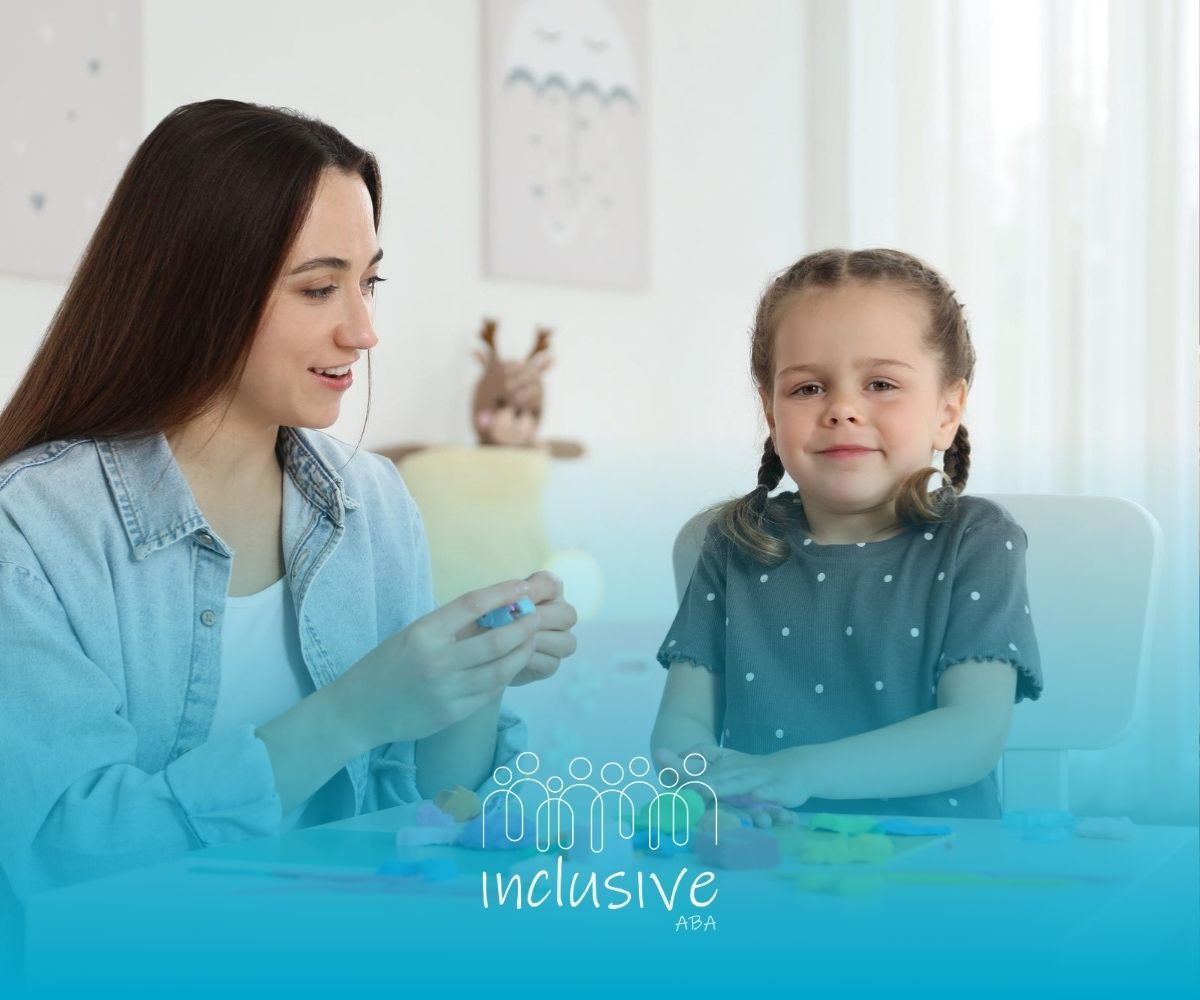
Mastering Home-Based ABA Therapy Scheduling Strategies
Home ABA therapy, with its highly effective and personalized approach, provides individuals with Autism Spectrum Disorder (ASD) the opportunity to learn and thrive in a comfortable and familiar setting. This approach, centered on Applied Behavior Analysis (ABA) principles, emphasizes tailoring therapy to each child’s unique needs, promoting skill development, and addressing challenging behaviors within the context of their everyday routines. This blog post will guide you through practical strategies for creating and managing an effective home-based ABA therapy schedule.
Essential Principles of Home-Based ABA Therapy
Home-based ABA therapy embraces the philosophy of meeting the child where they are, literally, by bringing therapy into their natural environment. This personalized approach utilizes the familiarity of home to create a comfortable and less intimidating space for learning. Utilizing Applied Behavior Analysis (ABA) principles, therapists work closely with families to develop individualized treatment plans that align with the child's specific needs, promoting positive behavioral changes and skill acquisition in meaningful contexts.
The success of home-based ABA therapy heavily relies on the active participation of family members. Parents and caregivers play a crucial role in reinforcing learned behaviors outside of scheduled therapy sessions, ensuring consistent progress. By integrating therapy into daily routines and activities, the child can generalize these skills into their everyday life, leading to greater independence and overall well-being.
Understanding the Basics of ABA Therapy
ABA therapy, short for Applied Behavior Analysis, is a scientifically validated approach commonly employed to help individuals with Autism Spectrum Disorder (ASD) develop essential skills and manage challenging behaviors. It operates on the premise that behaviors are learned and can be modified through systematic interventions and positive reinforcement techniques.
Grounded in the principles of behavior analysis, ABA therapy breaks down complex behaviors into smaller, more manageable steps. Trained therapists meticulously assess the individual's strengths and areas for improvement to create a personalized treatment plan. By carefully analyzing the antecedents (triggers) and consequences of behaviors, therapists can identify patterns and develop strategies to encourage desired behaviors.
Through a carefully designed program of reinforcement, both positive and negative, ABA therapy aims to increase desirable behaviors (e.g., communication, social interaction) and decrease those that may be hindering a child’s progress. ABA therapy emphasizes consistent data collection and analysis to monitor progress and make adjustments as needed, ensuring the effectiveness of the interventions and fostering optimal outcomes.
Importance of Tailoring Therapy to Individual Needs
Central to successful ABA therapy is a deep understanding and respect for the individual needs of each child. Recognizing that no two children on the autism spectrum are alike, therapists take a personalized approach, acknowledging unique strengths, challenges, and learning styles.
This personalized approach starts with a comprehensive assessment to determine the child’s current skill level, interests, and areas requiring intervention. By considering these individual needs, therapists can create a targeted treatment plan that addresses specific goals, such as improving communication, enhancing social skills, or managing challenging behaviors.
Tailoring therapy to individual needs ensures that sessions are engaging and motivating for the child. Utilizing preferred activities, familiar environments, and individualized reinforcement strategies, therapists can create a positive and productive learning experience for each child, promoting meaningful progress and maximizing therapeutic outcomes.
Crafting an Effective Schedule for Home-Based ABA
Crafting an effective schedule for home-based ABA therapy involves a thoughtful balance between adhering to a consistent routine and remaining adaptable to the child’s individual needs and family dynamics. By taking into account the child’s natural rhythms, peak learning times, and any existing schedules or commitments, therapists and families can work collaboratively to establish a schedule that optimizes both comfort and consistency.
When establishing a schedule for home-based ABA therapy, it’s important to consider factors like the recommended weekly hours, typically determined by a Board Certified Behavior Analyst (BCBA), and the duration of individual therapy sessions. Aiming for a consistent rhythm to the week, while remaining flexible in response to unexpected events or changes in the child’s needs, can help create a predictable and supportive framework.
Assessing the Child's Daily Routines and Preferences
When establishing a schedule for home-based ABA therapy, it is paramount to begin by understanding the child's existing daily routines and preferences. This information allows therapists and families to integrate therapy sessions seamlessly into the child’s familiar environment, making the experience more comfortable and conducive to learning.
Begin by closely examining the child’s daily life: their wake-up and bedtime routines, mealtimes, preferred playtime activities, and any existing schedules for school or other therapies. Consider also their individual needs and sensory sensitivities—are there specific times of day when they are typically more alert or, conversely, more likely to need a quiet break?
By carefully considering these existing rhythms, therapists and families can pinpoint the most advantageous times for therapy sessions, maximizing the child’s engagement and participation. This process of adapting the therapy schedule to the child’s individual needs and preferences fosters a sense of familiarity and control, enhancing the overall effectiveness of the therapeutic interventions.
Strategies for Integrating ABA Sessions into Daily Life
Effectively blending ABA therapy into a child’s everyday life involves thinking beyond dedicated session times and exploring opportunities to incorporate therapeutic strategies into naturally occurring routines and activities. This approach, often referred to as embedded instruction, promotes the generalization of skills and fosters a consistent approach to learning.
Consider these strategies:
- Transform everyday routines into learning experiences: Use mealtimes to work on communication goals, bath time to practice sequencing, or getting dressed to target fine motor skills.
- Utilize visual schedules: Visual supports, such as picture cards or schedules, can help children anticipate and transition between activities, making the day more predictable and easing anxiety.
- Create a consistent ABA therapy routine: While flexibility is important, establishing a predictable flow to therapy sessions with clear start and finish cues can help the child understand expectations and feel more settled.
By weaving ABA principles into daily life, families and therapists create a consistent learning environment that extends beyond designated therapy times.
Tips for Flexibility While Maintaining Consistency
While maintaining a consistent schedule for home-based ABA therapy is critical, equal emphasis should be placed on retaining flexibility to accommodate the ever-evolving needs of the child and unexpected events that life throws our way. Striking this balance ensures that the therapy remains effective and responsive to the child’s journey.
One of the cornerstones of flexibility in therapy is open and ongoing communication between therapists and families. Regularly sharing observations about the child's progress, any changes in their behavior or routine, or potential scheduling conflicts allows for timely adjustments to the therapy plan.
Remember that a therapy schedule should be viewed as a dynamic framework. Don’t hesitate to adjust session times or durations as needed, bearing in mind the child’s energy levels and any other commitments they may have on a given day. Being adaptable ensures that therapy remains a positive experience that supports, rather than overwhelms, the child.
Role of Family Members in Home-Based ABA
Family members hold an integral role in the success of home-based ABA therapy. The supportive environment of a loving home, coupled with active participation from parents and siblings, can significantly enhance the therapy’s effectiveness and contribute positively to the child's overall well-being.
More than just passive observers, family members actively collaborate with therapists, learning and implementing ABA techniques, generalizing skills to various contexts, and providing encouragement and positive reinforcement for the child's efforts. This collaborative approach strengthens the child’s support system and creates a nurturing environment that fosters growth and development.
Training Parents and Siblings on ABA Techniques
For home-based ABA therapy to truly thrive, it’s essential to equip family members—parents, siblings, and other close caregivers—with a solid understanding of ABA techniques and their role in supporting the child’s progress. This active participation strengthens the consistency of interventions between therapy sessions, fostering the generalization of skills into the child’s everyday interactions.
Therapists can guide family members through various ABA strategies, including prompting, reinforcement, shaping, and how to effectively manage challenging behaviors. These training sessions, tailored to the individual needs of the child and the family’s learning styles, provide practical tools and techniques that empower families to become active participants in the therapeutic process.
Moreover, these training sessions provide a valuable space for open communication between therapists and family members. This ongoing dialogue ensures everyone feels heard, promotes a shared understanding of the child’s progress, and allows for adjustments to techniques based on observations from both the home and therapy settings.
Encouraging Positive Family Dynamics and Involvement
Home-based ABA therapy presents a unique opportunity to cultivate positive family dynamics and strengthen the bonds between family members, all while fostering the child’s development. By encouraging open communication, active listening, and collaborative problem-solving, therapists can help families create a supportive environment where everyone feels heard and valued.
Involving siblings in age-appropriate ways can be especially beneficial, not just for the child undergoing therapy, but for fostering understanding and empathy within the family unit. Siblings can learn how to interact positively with their brother or sister, how to offer support and encouragement, and how to participate in activities that promote social interaction and skill-building.
Ultimately, creating a home environment where positive behaviors are recognized and celebrated, where open communication is encouraged, and where everyone feels empowered to support each other contributes to the long-term success of the therapy and strengthens the family as a whole.
Balancing Therapy with Family Time and Obligations
While the commitment to home-based ABA therapy is significant, it’s crucial to strike a balance that honors the importance of family time, individual needs, and other commitments of daily life. Achieving this equilibrium ensures that therapy complements, rather than overshadows, the family's routine, promoting long-term sustainability and well-being.
Open communication between therapists and families is paramount in finding this balance. Collaboratively, they can create a schedule that factors in dedicated family time—whether it’s sharing meals, enjoying a movie night, or simply engaging in unstructured play—ensuring there is space for connection and relaxation.
Remember, the goal of ABA therapy is to equip children with skills that empower them to thrive in all aspects of their lives. It’s not about creating a rigid structure that eclipses other important elements of family life. By prioritizing open dialogue and being flexible, therapists and families can work together to create a well-rounded approach that supports both the child’s development and the family's well-being.
Collaborative Approaches in ABA Therapy
Home-based ABA therapy thrives on a foundation of collaborative partnerships between therapists, families, and, where appropriate, other professionals involved in the child’s life. This team-oriented approach, characterized by open communication and shared decision-making, ensures that all voices are heard and that the therapy plan aligns with the child’s evolving needs.
By fostering a sense of mutual trust and respect, this collaborative model empowers families to become active participants in their child’s therapy journey. Regular check-ins, progress updates, and opportunities for open dialogue about successes and challenges help to refine the therapy plan, ensure it remains individualized, and promote the most effective outcomes for the child.
Fostering a Partnership Between Therapists and Families
The success of home-based ABA therapy hinges on nurturing a strong and trusting partnership between the therapy team and the child’s family. This collaborative approach, built on open communication, mutual respect, and shared decision-making, ensures everyone feels heard and valued, fostering the best possible outcomes for the child.
Open communication is the cornerstone of this partnership. Regular check-ins, both formal and informal, provide opportunities for therapists to update families on the child's progress, to share observations about new skills or areas needing attention, and to discuss any adjustments to the treatment plan.
Equally important is creating space for families to share their insights, concerns, and any observations they’ve made about their child’s behavior or progress outside of therapy sessions. By fostering a collaborative approach where both therapists and families contribute their expertise and perspectives, the therapy becomes truly individualized and responsive to the child’s evolving needs.
Utilizing Feedback for Therapy Adjustment
Continuous feedback is an invaluable tool for ensuring the effectiveness of ABA therapy. Parents and caregivers, often privy to behaviors and nuances in the child’s behavior that may not always be apparent during sessions, play a crucial role in providing this feedback, allowing therapists to make real-time adjustments and personalize the therapy further.
Feedback exchanges can take various forms, from informal conversations during session transitions to more structured weekly or bi-weekly meetings. Utilizing tools such as data sheets, progress trackers, or shared online platforms can facilitate these exchanges, creating a system where information flows seamlessly between therapists and families.
Here’s a simple way to organize feedback:
| Therapy Session Goal | Progress Observed (Family/Therapist) | Feedback/Proposed Adjustments |
|---|---|---|
| Improve turn-taking during playtime | Child initiated sharing toys with sibling. | Introduce new toys to increase motivation for turn-taking |
| Reduce tantrums during transitions | Fewer tantrums observed when using visual timer. | Phase out timer gradually as child adapts to transitions |
| Increase independence during mealtimes | Child successfully used utensils independently. | Introduce a new food item to challenge and expand skills |
This ongoing feedback loop ensures that the therapy plan remains dynamic and responsive to the child’s evolving strengths and challenges.
Importance of Continuous Communication
Open and continuous communication forms the bedrock of successful home-based ABA therapy. Beyond simply relaying information, it’s about cultivating a shared understanding between therapists and families, fostering an environment of trust and collaboration, and ultimately enhancing the therapy’s impact on the child’s life.
Consistent communication ensures that everyone involved in the child’s development—therapists, parents, and caregivers—remains aligned on the therapy goals, can celebrate successes together, and can collaboratively problem-solve challenges as they arise. It also allows for the seamless integration of therapeutic strategies into the child's daily routines.
Whether it’s through regular check-in meetings, informal exchanges during session transitions, or the use of shared communication logs, prioritize a culture of open dialogue and active listening, recognizing that each perspective contributes valuable insights that shape the child’s progress and the overall effectiveness of the therapy plan.
Overcoming Obstacles in Home-Based ABA Scheduling
While home-based ABA therapy offers numerous benefits, from personalized learning to family involvement, it also presents unique scheduling challenges. Limited therapist availability, conflicting family commitments, or unexpected disruptions to routines are just a few hurdles that may arise during the implementation of home-based ABA therapy.
However, with careful planning, open communication, and proactive problem-solving, families and therapists can navigate these obstacles effectively, ensuring that the therapy schedule remains consistent and conducive to the child’s progress. Remember, flexibility is key—remaining adaptable and open to adjustments while maintaining a focus on the child’s best interests paves the way for successful outcomes.
Handling Unexpected Interruptions and Changes
Life, as we know, rarely adheres to a fixed schedule. Unexpected events, such as family emergencies, illness, or changes in work or school schedules, are inevitable and can temporarily disrupt the flow of home-based ABA therapy. However, instead of viewing these interruptions as setbacks, embrace them as opportunities for flexibility and creative problem-solving, ensuring therapy remains effective despite the curveballs.
Building a degree of flexibility into the therapy schedule from the outset can prove invaluable. This might involve having backup session times available, pre-arranging shorter “make-up” sessions if needed, or designing alternative activities that can be easily implemented if a session needs to be modified on short notice.
Ultimately, remember that the well-being of the child and the family unit takes precedence. Openly communicate any challenges, remain flexible in finding solutions, and don’t hesitate to adjust the schedule to accommodate unexpected events. This adaptable approach ensures that therapy remains a positive and supportive constant, even amidst the inevitable ebbs and flows of daily life.
Solutions for Common Challenges in Scheduling
Navigating the intricacies of a home-based ABA therapy schedule often involves tackling common challenges head-on. From juggling multiple family commitments to coordinating with therapists, finding solutions that work for everyone requires open communication, a collaborative spirit, and a healthy dose of creativity.
One frequent hurdle is finding overlapping availability between the family’s schedule, the child’s optimal learning times, and the therapist’s caseload. Utilizing shared online calendars, exploring alternative session timings (such as early mornings or weekends), or even considering a combination of home-based and center-based ABA therapy can provide viable solutions.
Remember, effective communication is key. Reach out to your ABA provider or therapist to openly discuss any scheduling challenges you encounter. They are your partners in this journey and can often provide valuable insights, resources, or alternative arrangements that ensure your child receives the consistent therapy they need to thrive.
Addressing Therapist Availability and Consistency
Consistent access to a qualified ABA therapist is paramount for effective therapy sessions. Yet, therapist availability can sometimes pose a challenge, particularly in areas with high demand for ABA services. Open communication with your ABA provider, coupled with proactive planning, can help mitigate these challenges and ensure your child receives the consistent support they need.
When initially scheduling therapy, discuss your desired frequency and session length with your provider. Be upfront about your family’s schedule and any potential constraints so they can realistically assess therapist availability and match your child with a therapist whose schedule aligns with your needs.
Remember, building a strong therapeutic relationship takes time and consistency. If possible, once you’ve found a therapist who is a good fit for your child and family, prioritize maintaining that continuity. By working together to proactively address scheduling needs, you pave the way for effective therapy sessions and positive outcomes for your child.
Conclusion
In conclusion, mastering home-based ABA therapy scheduling requires a blend of structure and adaptability. Understanding the essential principles of ABA therapy and tailoring them to individual needs is key. Crafting an effective schedule involves assessing daily routines, integrating sessions seamlessly, and maintaining flexibility while ensuring consistency. Involving family members by training them on ABA techniques and fostering positive dynamics enhances therapy outcomes. Collaboration between therapists and families, utilizing feedback, and ensuring continuous communication are vital. Overcoming obstacles like unexpected interruptions and addressing availability issues further refines the scheduling process. By implementing these strategies, you can optimize home-based ABA therapy for the best results.
At Inclusive ABA, we understand the unique demands of home-based ABA therapy and the importance of effective scheduling for maximizing progress and family well-being. Our experienced team provides comprehensive support and guidance in mastering scheduling strategies that promote consistency, minimize disruption, and optimize learning opportunities within the home environment. We collaborate closely with families to create individualized schedules that align with their routines and priorities, ensuring a seamless and successful therapy experience. Inclusive ABA is committed to empowering families to navigate home-based ABA with confidence, providing the tools and support needed to create a structured and nurturing learning environment where children can thrive.
Frequently Asked Questions
What is the ideal number of hours for weekly home-based ABA?
The ideal number of weekly ABA therapy hours varies depending on the child's individual needs, their age, and the specific goals outlined in their therapy plan. While there is no one-size-fits-all answer, research suggests that more intensive ABA therapy (20-40 hours per week) often leads to better outcomes for many children.
How can parents prepare their home for ABA sessions?
Creating a designated therapy space within the home can optimize the effectiveness of ABA therapy services. Choose a quiet, clutter-free area with minimal distractions. Having a table and chairs for structured activities and readily accessible storage for therapy materials helps maintain a consistent and organized environment, conducive to learning.
What are effective methods to monitor progress in ABA therapy?
Monitoring progress in ABA therapy relies heavily on data collection and analysis. Therapists typically use data sheets, charts, or digital platforms to track the child's progress towards their therapy goals. Regularly reviewing this data allows the therapy team to make data-driven decisions and adjustments, ensuring the effectiveness of the intervention.
Looking for Expert Help? We're Here for You!
Our compassionate and skilled team is devoted to enhancing your child's development through customized ABA therapy. Let us partner with you to create a supportive environment for your child's success.
Discover how we can help your family thrive with expert ABA therapy.
Send a Fax
303-616-1189
Mon-Fri: 9Am to 5.30 Pm
Sat- Sun: Closed












